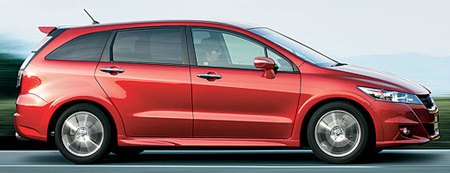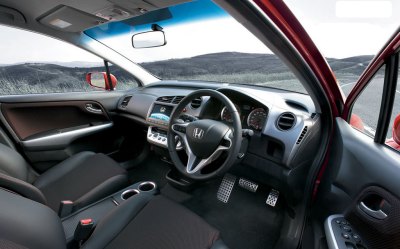Honda Stream
Debut: 2007 |
||||||
Well, this is not exactly a new car report. The current Honda Stream has been existing for 3 years and even underwent a minor facelift last year. It is just one of the missing links in AutoZine Archive. Now with some free time I am going to amend the missing links as far as possible. I remember the first generation Stream was a popular "world car" – it was offered in East Asia, North America as well as Europe. However, the second generation is bounded in its home market and right-hand-drive South East Asian countries such as Hong Kong, Singapore and Malaysia. Strangely, Honda America thought its people needed larger accommodation, so it would rather sell the old-shape Odyssey to American families. Honda Europe chose to import the six-seater FR-V (Japan's Edix) to replace the Stream. How wrong these strategies are ! Not only Honda America failed to attract young customers with Odyssey, the FR-V also sold badly in Europe thus was terminated last summer without replacement. In contrast, the Stream still sells strongly at the East end of the world. It is the most popular 7-people carrier here.
In many ways, the second generation Stream is a big departure from the original. First of all, it abandoned the lovely round design theme for a sportier, squarer interpretation. Its roof line is flatter, improving third-row passenger headroom yet enabling a lower overall height at 1545 mm. The latter allows the car to fit into double-decker car parks in Japan. Not only the roof, you will find the whole car looks lower, no matter the waistline, floor or seating level. Consequently, its center of gravity is much lowered. By the standard of 7-seat MPVs such as Citroen Grand C4 Picasso, Renault Grand Scenic or even Mazda 5, the Honda has the sportiest handling. Its suspension is not overly firm, but certainly not biased towards the soft side. Underpinning the car is Civic's platform, with MacPherson struts up front and 5-link rear suspensions which Honda preferred to call "double-wishbone with a track link". Adding to the low center of gravity, it drives much more like a heavier, longer Civic. Body roll is well resisted. Steering is reasonably quick and agile, although on-center feel is absence. Apart from "go-faster" aero kits, RSZ model offers all-wheel disc brakes and 17-inch alloy wheels to aid handling further, so it is definitely our choice. For sure, performance isn't in the league of Opel Zafira OPC. Honda is realistically equipped the Stream with power units that most people would buy, with no intention to produce an image model. Most of the cars come with Civic's 140hp 1.8 i-VTEC engine and 5-speed automatic transmission, a reasonably brisk and refined combination. Fuel consumption is very good, thanks to the i-VTEC that does the job of throttle butterfly at light load to reduce pumping loss. Another combination is 150hp 2.0 i-VTEC and a CVT with 7 manual steps. It provides extra mid-range torque but the CVT characteristic takes getting used to.
Inside, the Stream does not break the mould of existing MPVs. You get seven seats in three rows. The second row is 40/60 split and accommodative. The last row is 50/50 split and more suitable to children. Behind them is a boot with underfloor storage. All seats bar the driver's can fold flat, but on the downside their bases are fixed to the floor, unlike some rivals which mounted the seats on rails to slide back and forth. The seats themselves are well bolstered and supportive, matching the sporty handling. Instruments and center console are oriented towards the driver. Material quality is not class-leading, but you won't lose face either. Visibility is outstanding thanks to the slim A-pillars and large front quarter windows. Another highlight is a low yet flat floor, made possible by the compact rear suspension design and a slim fuel tank. As a people or luggage carrier, the Stream may not work as well as Citroen C4 Picasso, which is roomier and more comfortable. However, it hits the sweet spot between family cars and MPVs. Without losing much of the driving dynamics of family cars, it provides the convenience and accommodation of MPVs. I really can't understand why Honda didn't bring it to the world. |
||||||
| The above report was last updated on 6 Jan 2010. All Rights Reserved. |
| Specifications | |||||||||||||||||||||||||||||||||||||||||||||||||||||||||||||||||||
|
|||||||||||||||||||||||||||||||||||||||||||||||||||||||||||||||||||
| Performance tested by: - |
Copyright©
1997-2010
by Mark Wan @ AutoZine


